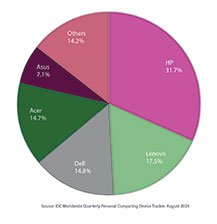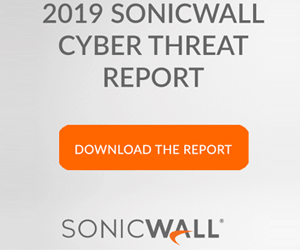
Tenable’s Security Response Team (SRT) reveals that over 35 percent of breaches analyzed by it (Tenable) were linked to ransomware attacks
Analysis of breach data by Tenable’s Security Response Team (SRT) has revealed that –from January through October 2020 – there were 730 publicly disclosed events resulting in over 22 billion records exposed worldwide. Some 35 percent of breaches analyzed by Tenable were linked to ransomware attacks, resulting in tremendous financial cost, while 14 percent of breaches were the result of email compromises.
One of the overarching themes of the threat landscape in 2020 was that threat actors relied on unpatched vulnerabilities in their attacks as well as chaining together multiple vulnerabilities as part of their attacks. This analysis has been published in Tenable’s 2020 Threat Landscape Retrospective (TLR) report which provides an overview of the key vulnerabilities disclosed or exploited in the 12 months ending December 31, 2020.
As organizations around the world prepare to face the new cybersecurity challenges looming in 2021, it’s crucial to pause and take a look back at the most critical vulnerabilities and risks from the past year. Understanding which enterprise systems are affected by the year’s vulnerabilities can help organizations understand which flaws represent the greatest risk.
“Every day, cybersecurity professionals in India and the rest of the world are faced with new challenges and vulnerabilities that can put their organisations at risk. The 18,358 vulnerabilities disclosed in 2020 alone reflects a new normal and a clear sign that the job of a cyber defender is only getting more difficult as they navigate the ever-expanding attack surface,” said Satnam Narang, Staff Research Engineer at Tenable. “A complex threat landscape, highly motivated threat actors and readily available exploit code translate into serious cyber attacks as reflected in this report. Many of the tactics used by bad actors are not sophisticated or didn’t require flexing too many mental muscles – making it more important than ever to patch vulnerabilities in a timely manner.”
“To adapt in a digital and distributed world, every industry sector and business model is reliant on technology. Hence, pausing for a retrospective provides cybersecurity professionals with an important opportunity to identify gaps and refine strategies to make their organisations more secure. In 2021, it’s essential that we have the tools, awareness and intelligence to effectively reduce risk and eliminate blind spots. It’s only through looking at where we’ve come from that we can effectively plan for what lies ahead,” he added.
From 2015 to 2020, the number of reported common vulnerabilities and exposures (CVEs) increased at an average annual percentage growth rate of 36.6 percent. In 2020, 18,358 CVEs were reported, representing a 6 percent increase over the 17,305 reported in 2019, and a 183 percent increase over the 6,487 disclosed in 2015. Prioritizing which vulnerabilities warrants attention is more challenging than ever. Two notable trends from the report are:
Throughout the year, Tenable’s Security Response Team tracks and reports on vulnerabilities and security incidents, providing guidance to security professionals as they plan their response strategies. The team’s work gives them the opportunity to closely observe the ever-changing dynamics of the threat landscape.




























































